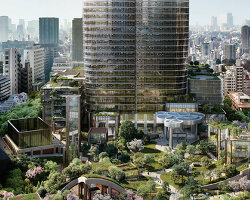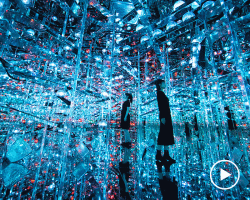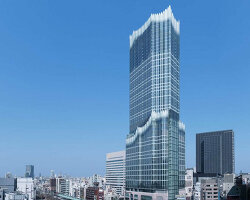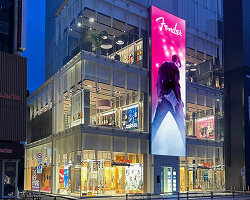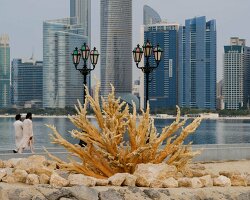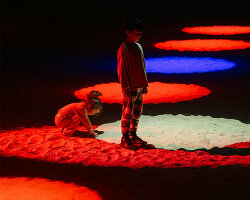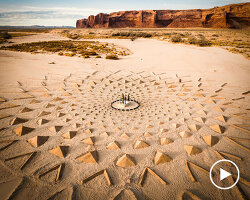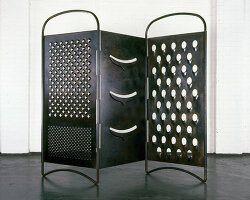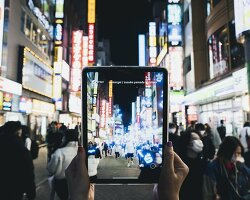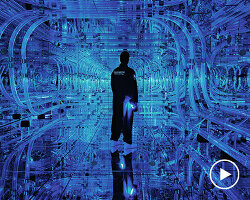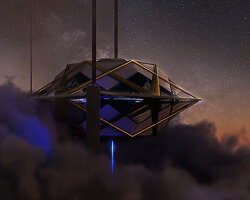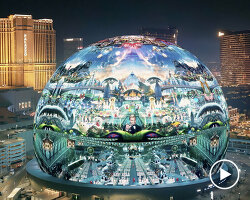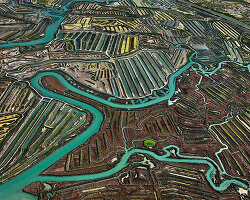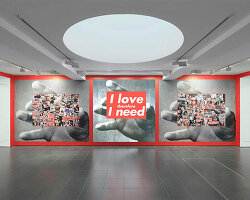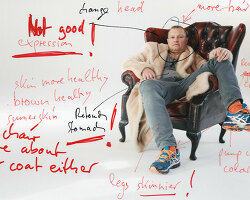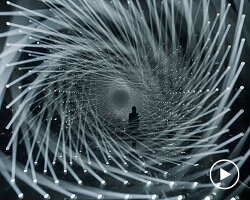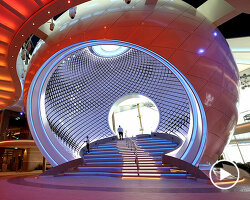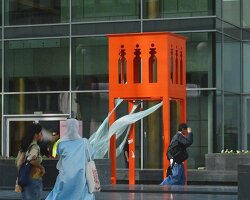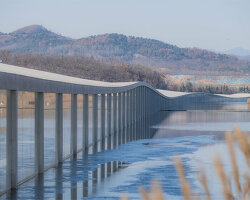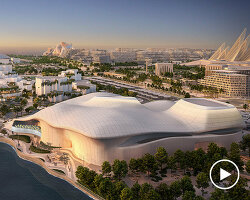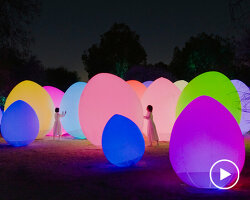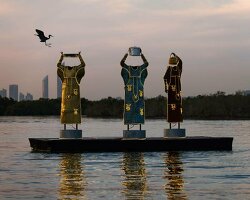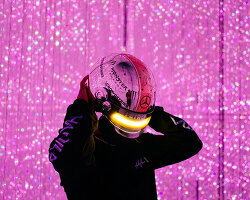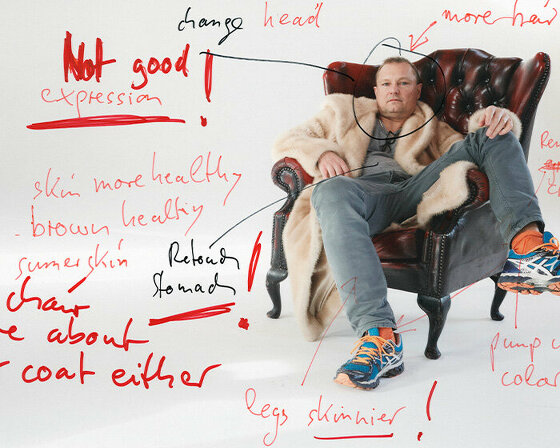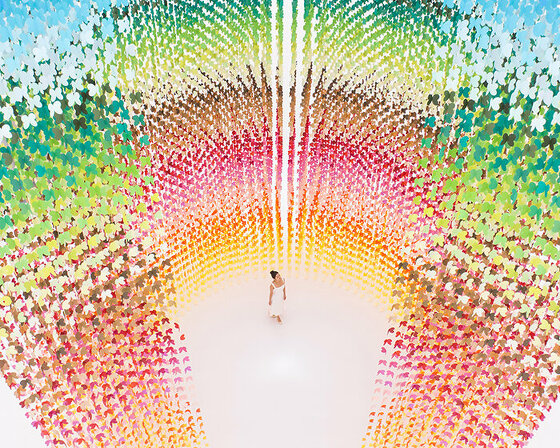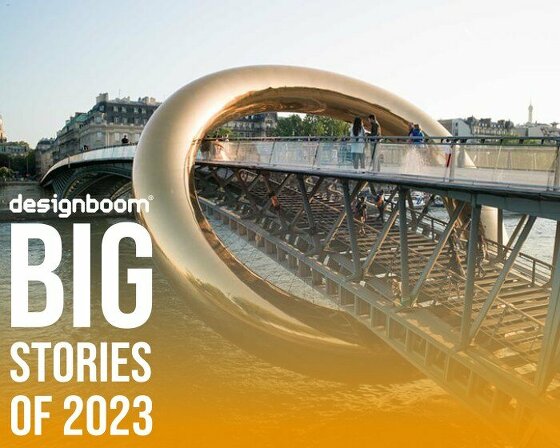DESIGNBOOM VISITS BODY-IMMERSIVE MUSEUM TEAMLAB PLANETS TOKYO
teamLab Planets Tokyo is the digital art museum founded by the international art collective teamLab, located in Toyosu, Tokyo. The concept behind Planets is body-immersive: interactive installations that bring people physically inside the imagination of teamLab. Art has always privileged sight over other senses, and through the various installations in Planets, teamLab aims to transform art from something to be experienced visually to something to be experienced with the entire body. Visitors can expect to walk through knee-high water and lie beneath a sky of digital flowers. The surreal museum opened in 2018 and has since garnered immense popularity with one in ten people visiting Japan also visiting Planets. Following our coverage of the museum latest addition, designboom had the opportunity to physically explore the interactive exhibition and meet with Takashi Kudo, Communication Director and teamLab’s spokesperson, to discuss the concepts behind those projects.
Visitors begin their journey into Planets by removing their shoes and stepping into a waterfall of light particles; a waterfall installation where visitors must walk upstream. The installation is dimly lit, with the only lights being those reflecting off the water droplets cascading downstream. Among the museum’s many marvels is Infinite Crystal Universe: a room filled with LED lights and mirrors which visitors can walk through and lose themselves in the seemingly never-ending space. The concept behind this artwork was to create a three-dimensional version of pointillism. The installation is also interactive as the audience can, via an app, select the ‘stars’ that transform the colored lights and sounds within the space. Another highlight of Planets is the Drawing on the Water Surface Created by the Dance of Koi and People – Infinity where visitors get knee-deep in water as digital Koi fish are projected onto the water and swim around people. The trajectory of the koi is determined by the presence of people, and these trajectories trace lines on the surface of the water; interaction with the digital creatures will result in them transforming into flowers that then scatter.
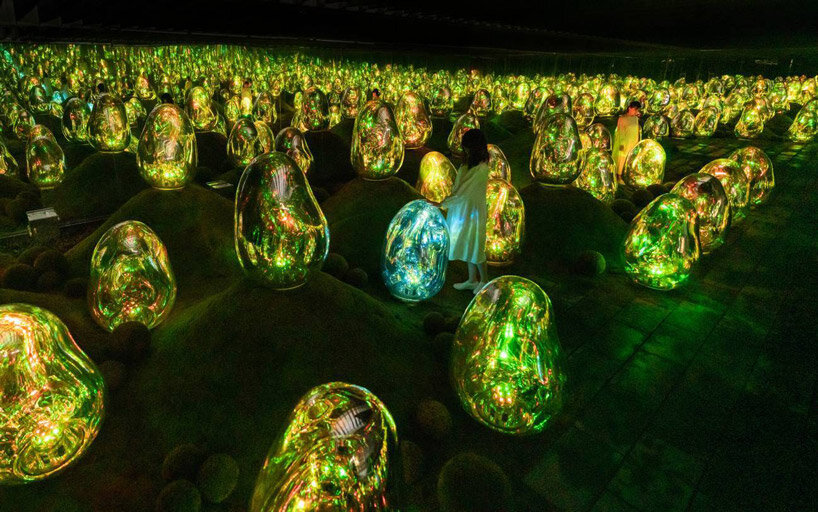
Moss Garden of Resonating Microcosms – Solidified Light Color, Sunrise and Sunset | image © teamLab
13,000 LIVE ORCHIDS WAVE AROUND AS THE VISITORS MOVE
The newest addition to teamLab’s Planets is the Garden which consists of two new installations. The Floating Flower Garden is made up of 13,000 live orchids that float above people when they approach it. The orchids are attached to sensors so that they move above visitors when they get close, opening up spaces as they wander around. These orchids are alive, as they can grow without soil by absorbing water from the air. Because of this, the installation is constantly evolving, with the flowers growing and blooming throughout the day, and emitting a stronger scent at night.
Moss Garden of Resonating, Microcosms is another of teamLab’s latest additions to Planets. Located outdoors, the moss garden is covered in ovoids that reflect sunlight and the world around them during the day and become filled with colored lights after sunset. When the ovoids are pushed by a person or blown by the wind, they change color and emit mesmerizing sounds. This installation not only interacts with the visitors but is also affected by weather conditions and the time of day. Inside the ovoids, a blend of colors forms the newly-defined Solidified-Light Colors, which is part of teamLab’s ongoing experimentation with color.
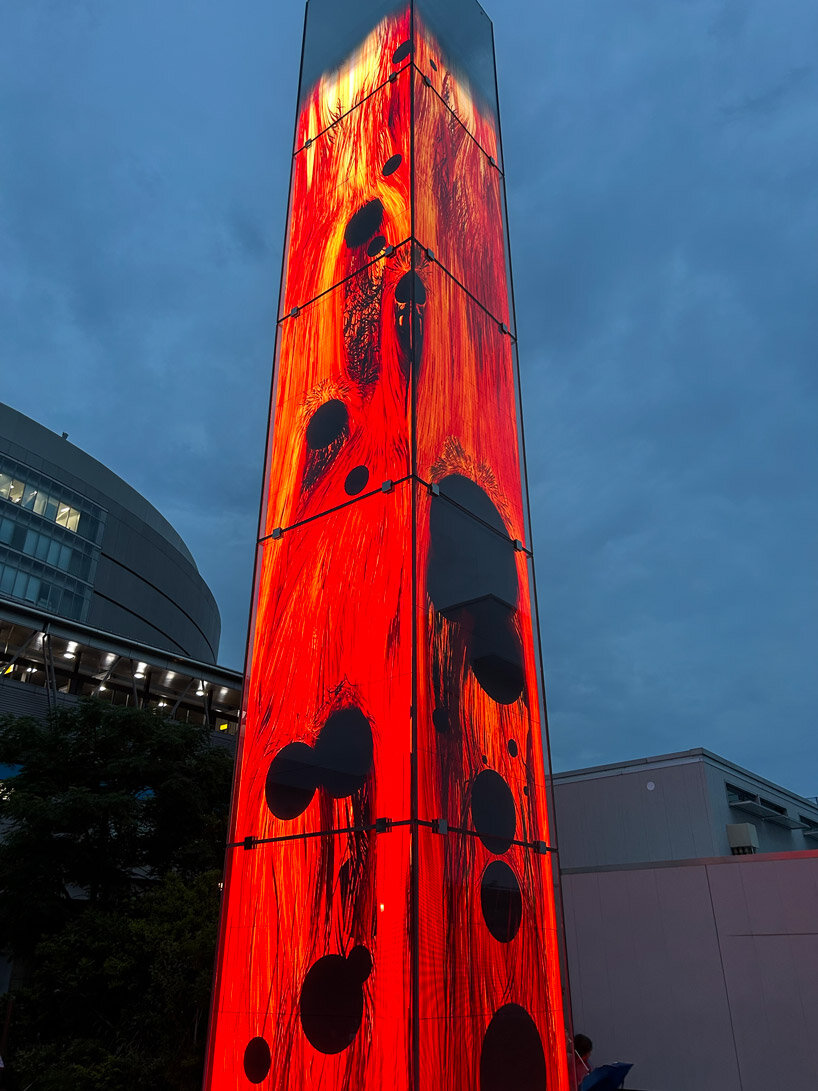
Universe of Fire Particles Falling from the Sky | image © designboom
INTERVIEW W/ Takashi Kudo, teamLab COMMUNICATIONS Director
designboom (DB): Can you elaborate on your research about people’s relationship with nature and the world through digital technology?
Takashi Kudo (TK): Since we founded teamLab in 2001, our aim has always been to find new relationships between humans and the world. With teamLab Planets, which we opened in 2018, you can see we’ve been trying many different installations; some of them use projectors, whilst others are more kinetic. But we always try to bring the visitor inside our imaginations, with other people, and to experience the works with their entire physical bodies. Us humans recognize the world not only with our eyes but with every sense, and we bring this approach to our art. If we want to understand our world, we should be there with our physical bodies.
DB: You were among the pioneers in the digital arts realm, what tech tools have made a stronger impact on your workflow?
TK: Using digital technology is a core part of our artwork, and we work with many new technologies. But our artwork is much more than this, and our aim is always to find this relationship between humans and the world. For us, technology is just a tool, like paint for a painter or a fine artist using bronze to make a sculpture. It’s always about the concept and the experience.
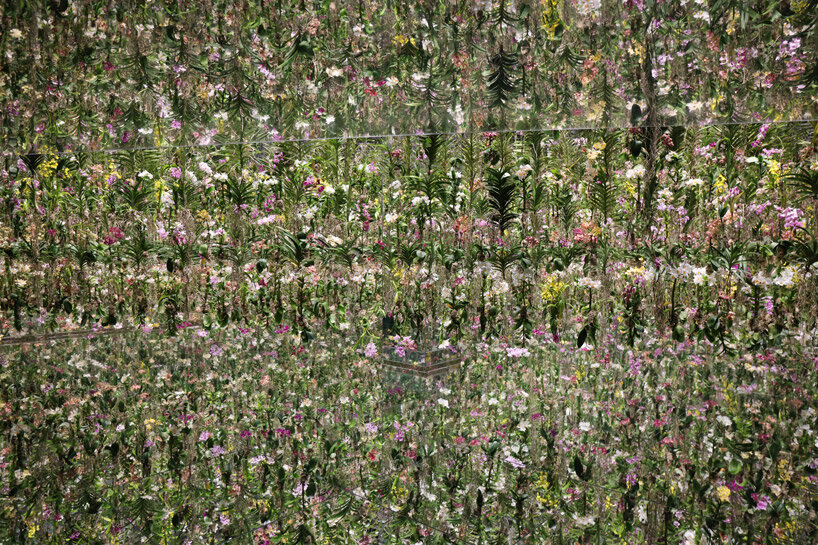
Floating Flower Garden: Flowers and I are of the Same Root, the Garden and I are One | image © designboom
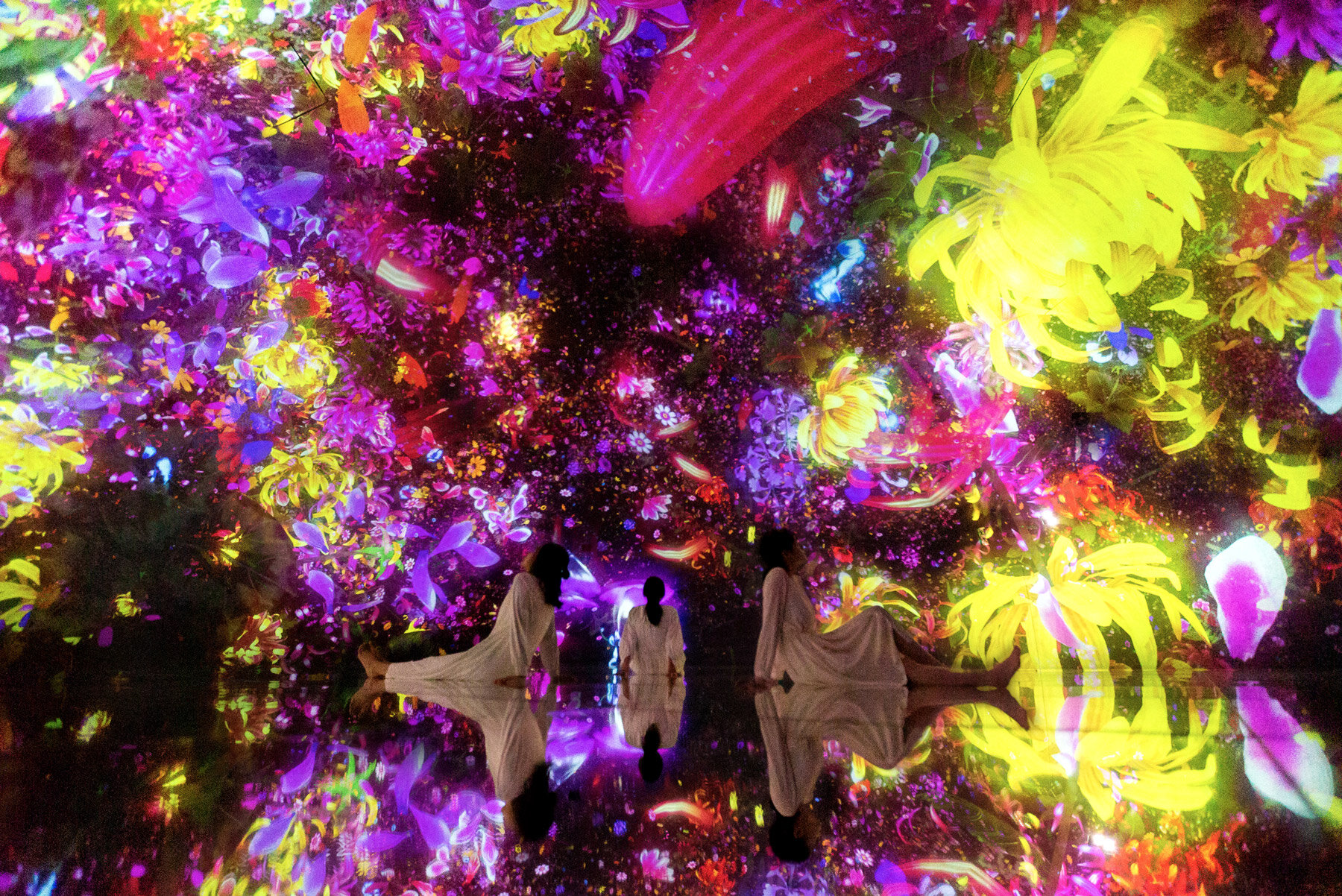
Floating in the Falling Universe of Flowers. ©teamLab
DB: What makes teamLab Planet Tokyo experience so special?
TK: The main concept of teamLab’s Planets is body immersive. From the first entrance, you walk up a dark waterfall which gets you focusing on your feet. Then you enter into another dark room called Soft Black Hole where there is padded, cushioned floor. It is hard to walk through as your foot sinks with each step you take but it is like walking through a forrest where the people that have walked before you formed paths and so you tend to walk where other people have walked. With Infinite Crystal Universe we wanted to use digital technologies to make a sculptural art work. Normally digital art is two dimensional, you have an x and y axis but we started wondering if we could make a z axis. In creating the z axis it creates the impression of infinite space. People can use the teamLab Planets app to change the elements of the universe so it is interactive not only with yourself and the artwork but also with the other people inside the space and the elements that they choose. The next one is in the water in the Koi fish room. When you enter the water sometimes the koi is going to come to you and other times they swim away. We cannot control their movement, so it is in real time. Ultimately we wanted to bring people inside of our imagination and allow them to interact. In the room full of spheres of lights you can touch the spheres and push them around which makes them change colours. The coloured lights replicate nature, so you have sunshine and sunset. We are essentially using the lights as a paint, and the canvas is everywhere and the more colours that are present the more depth there is within the room. All those physically fully immersive experiences make teamLab Planets Tokyo unique.
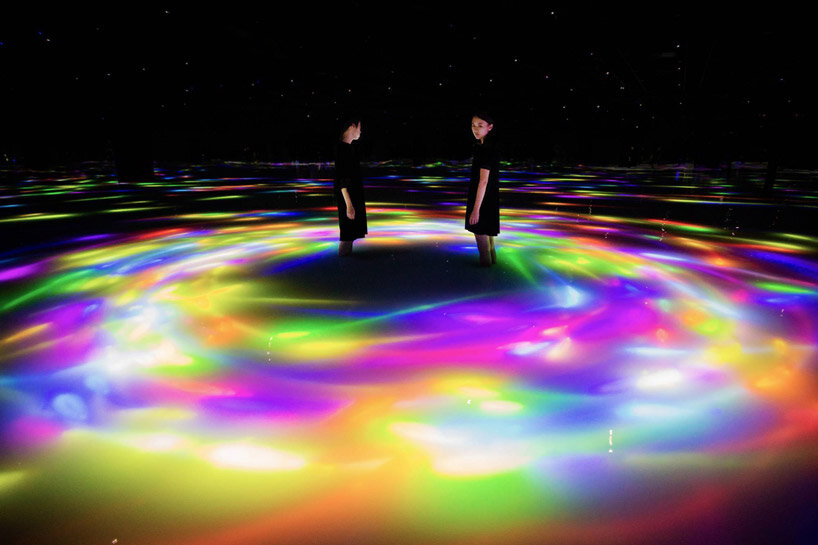
Drawing on the Water Surface Created by the Dance of Koi and People – Infinity | image © teamLab
DB: You were talking about the strong need for a teamLab garden installation in Planets Tokyo, what’s the reason behind this?
TK: The first inspiration for the Garden was considering the small things, like why are we charmed by flowers? Flowers are beautiful but are unnecessary for our life, we love flowers even though we cannot eat most of them and we cannot use them for almost anything. It was a long time ago that the people on earth saw flowers and said wow that’s beautiful and we started to think why. The first life on earth started in the oceans, some kinds of planktons and one of the first species is the Japanese moss. Then many different plants started showing up all around the world. During the dinosaur times there were so many big trees but there were no flowers. The logic of why this was is very simple; a plant survives by being taller and wider than others this way you get more sunshine and rain. Whats interesting for us is that suddenly a new specie of plant started showing up on earth: flowers. Flowers are energy and they choose to give their own energy to other species such as bees and butterflies and this way they spread all over the world. This idea of sharing energy is why a flower is a kind of icon, it’s not just focusing on their life, but in finding new ways of survival. When the orchid started showing up there was no space for them on earth, so they started growing on rocks as they don’t need soil, all they need to survive is water sunshine and bacteria.
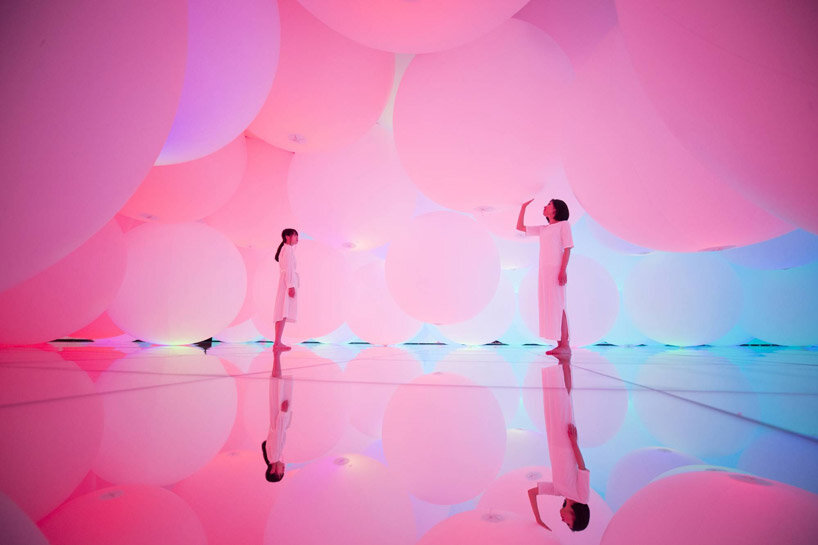
Expanding Three-dimensional Existence in Transforming Space – Flattening 3 Colors and 9 Blurred Colors | image © teamLab
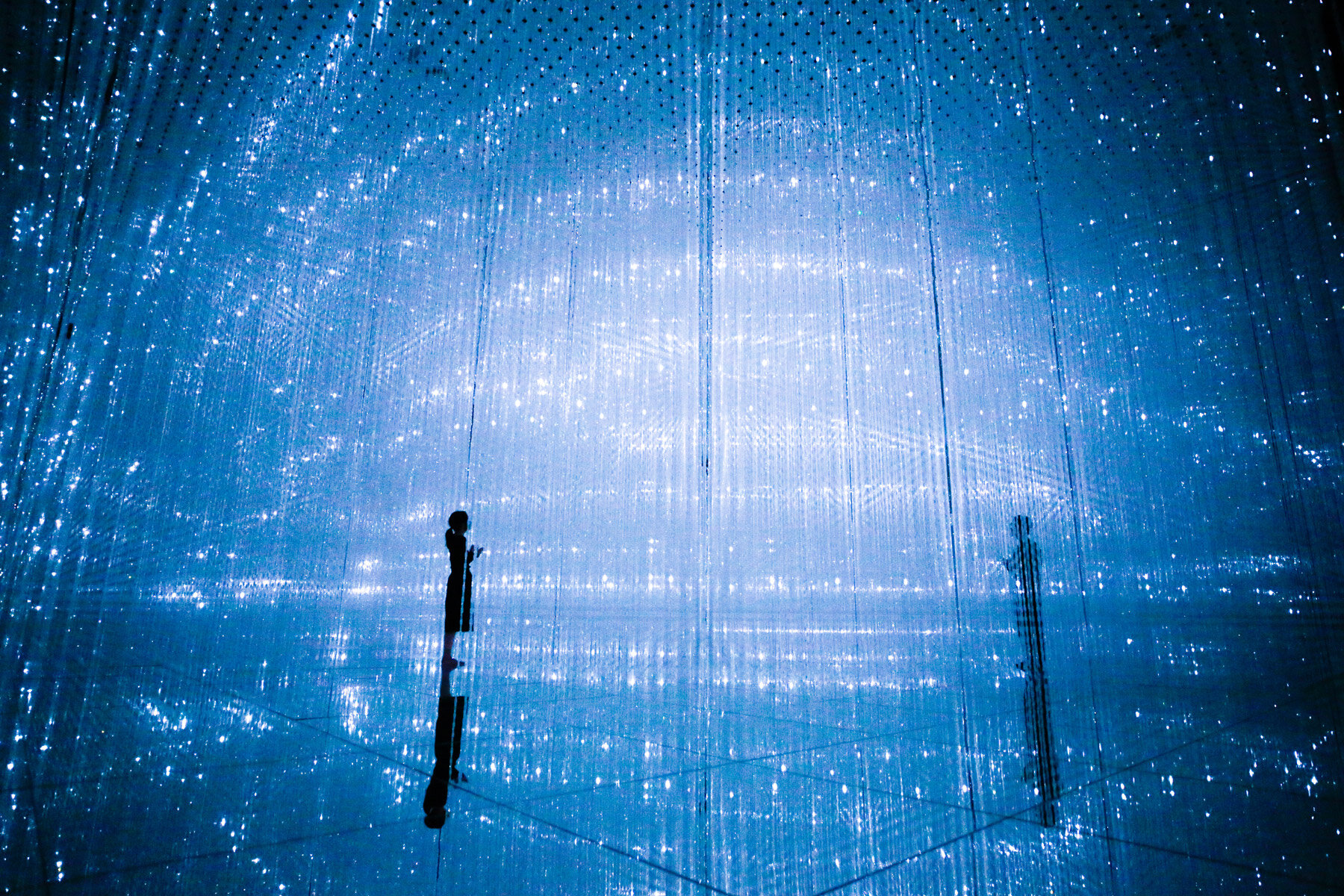
The Infinite Crystal Universe. ©teamLab
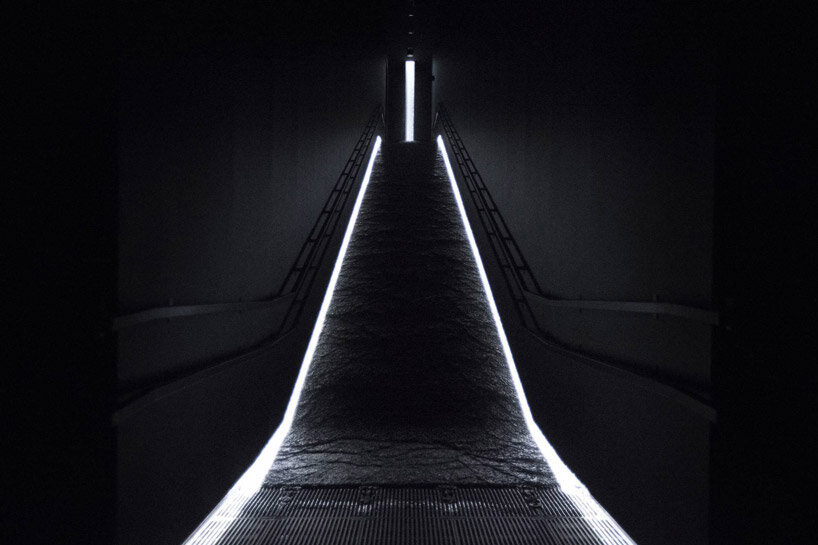
Waterfall of Light Particles at the Top of an Incline | image © designboom
project info:
name: Planets TOKYO
artist: teamLab
location: Toyosu, Tokyo, Japan
ART IN TOKYO (9)
ART INTERVIEWS (113)
DIGITAL ART (120)
EXHIBITION DESIGN (507)
INTERACTIVE INSTALLATION (189)
MUSEUMS AND GALLERIES (631)
TEAMLAB (58)
PRODUCT LIBRARY
a diverse digital database that acts as a valuable guide in gaining insight and information about a product directly from the manufacturer, and serves as a rich reference point in developing a project or scheme.
